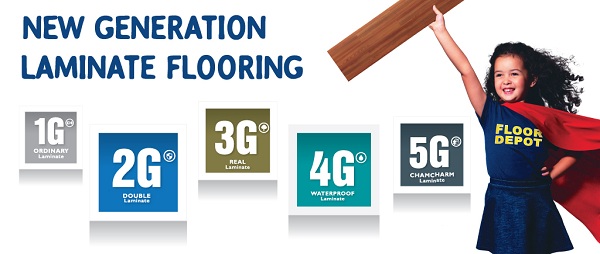The Canadian Anti-Spam Law (CASL) is in effect from July 1, 2014. If you’re in Canada or send to Canadian residents, you’ll likely need to comply with CASL. Luckily, there’s a three-year transition period, until July 1, 2017, during which you can take steps to ensure your list stays in compliance under the law.
This article is provided as a resource, but does not constitute legal advice. It’s important to note that we’re not legal professionals. It may be best to seek professional legal advice in these instances just to be sure any practices are in compliance with the new CASL legislation.
Liability
There are new consequences for spammers, including fines of $1-10M per violation. It’s important to note that individuals and companies, including directors, officers and other agents, are responsible and liable for the messages they send. After July 1, 2017, any individual will also be able to sue any entity they believe is sending spam messages.
Exempt Messages
These types of electronic messages are exempt from CASL for various reasons:
- Messages to family or a person with established personal relationship.
- Messages to an employee, consultant, or person associated with your business.
- Responses to a current customer, or someone who has inquired in the last six months.
- Messages that will be opened or accessed in a foreign country, including the U.S., China, and most of Europe.
- Messages sent on behalf of a charity or political organization for the purposes of raising funds or soliciting contributions.
- Messages attempting to enforce a legal right or court order.
- Messages that provide warranty, recall, safety, or security information about a product or service purchased by the recipient.
- Messages that provide information about a purchase, subscription, membership, account, loan, or other ongoing relationship, including delivery of product updates or upgrades.
- A single message to a recipient without an existing relationship on the basis of a referral. The full name of the referring person must be disclosed in the message. The referrer may be family or have another relationship with the person to whom you’re sending.
If your message does not meet one of these criteria, consent is required under CASL.
Implied vs. Express Consent
Our partner, Market 2 All, has an Anti-Spam policy that is opt-in only, requiring explicit permission from all subscribers. This means that what has been the policy of Market 2 All complies with both the previous laws and this new legislation, which means if you comply with our permissions you should comply with CASL.
The law defines two types of consent: implied and express. Implied consent is a looser interpretation, whereas express consent requires action from both sender and recipient.
Implied consent includes when:
- A recipient has purchased a product, service or made another business deal, contract, or membership with your organization in the last 24 months;
- You are a registered charity or political organization, and the recipient has made a donation or gift, has volunteered, or attended a meeting organized by you; or
- A professional message is sent to someone whose email address was given to you, or is conspicuously published, and who hasn’t published or told you that they don’t want unsolicited messages.
If your recipients don’t meet any of the above criteria, then express consent is required before you can send campaigns to them.
Express consent means written or oral agreement to receive specific types of messages, for example “You want to receive monthly newsletters and weekly discount notifications from Company A.” Express consent is only valid if the following information is included with your request for consent:
- A clear and concise description of your purpose in obtaining consent
- A description of messages you’ll be sending
- Requestor’s name and contact information (physical mailing address and telephone number, email address, or website URL)
- A statement that the recipient may unsubscribe at any time.
The requestor can be you or someone for whom you’re asking. If you’re requesting consent on behalf of a client, the client’s name and contact information must be included with the consent request.
During the transition period, July 1, 2014-July 1, 2017, you may continue to send messages to recipients from whom you have implied consent, unless they unsubscribe. After the 2017 cut-off date, you may only send to recipients with express consent or whose implied consent is currently valid under CASL—that is, 24 months after a purchase or six months after an inquiry.
Market 2 All Terms of Use
In many cases, Market 2 All’s Terms of Use are more strict than what’s outlined in CASL, particularly regarding third-parties and implied consent. As a rule of thumb, you want to have written permission from every subscriber.
Sticking to Market 2 All’s policies is not only required, it also helps improve your campaign deliverability and subscriber engagement. Here are some of Market 2 All’s Terms that differ from CASL.
- An email newsletter subscribe form on your web site.
- An opt-in checkbox on a form. This checkbox must not be checked by default, the person completing the form must willingly select the checkbox to indicate they want to hear from you.
- If someone completes an offline form like a survey or enters a competition, you can only contact them if it was explained to them that you would be contacting them by email AND they ticked a box indicating they would like you to contact them.
- Customers who have purchased from you within the last 2 years.
- If someone gives you their business card and you have explicitly asked for permission to add them to your list, you can contact them. If they dropped their business card in a fishbowl at a trade show, there must be a sign indicating they will be contacted by email about that specific topic.
What Can You Do Now?
To ensure your subscriber list is in good shape and you are sending emails only to engaged subscribers, we recommend removing any subscribers that have not opened an email in the last 6 months and also reconfirming subscribers that have not used your services in the last year.
- See more at: http://www.paulmycroft.com/email-marketing/canada-anti-spam-law-casl/#sthash.ImmtwotY.dpufSource : http://www.paulmycroft.com/email-marketing/canada-anti-spam-law-casl/
Tags : email marketing, email marketing software, singapore email marketing, email blast, singapore email database






